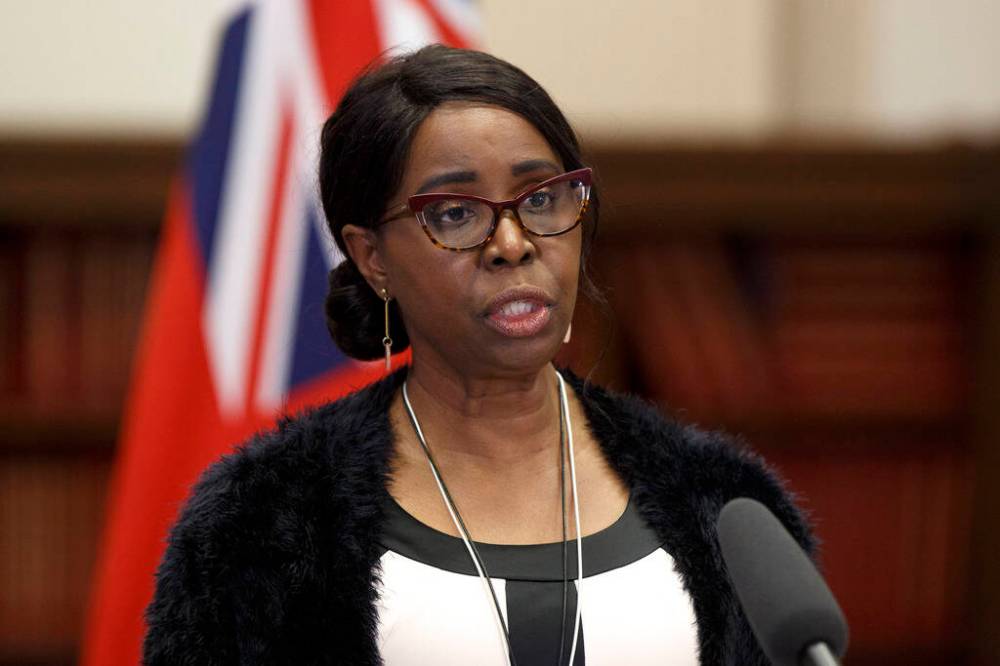Blackout is shabby excuse for wait-times silence
Read this article for free:
or
Already have an account? Log in here »
To continue reading, please subscribe:
Monthly Digital Subscription
$0 for the first 4 weeks*
- Enjoy unlimited reading on winnipegfreepress.com
- Read the E-Edition, our digital replica newspaper
- Access News Break, our award-winning app
- Play interactive puzzles
*No charge for 4 weeks then price increases to the regular rate of $19.00 plus GST every four weeks. Offer available to new and qualified returning subscribers only. Cancel any time.
Monthly Digital Subscription
$4.75/week*
- Enjoy unlimited reading on winnipegfreepress.com
- Read the E-Edition, our digital replica newspaper
- Access News Break, our award-winning app
- Play interactive puzzles
*Billed as $19 plus GST every four weeks. Cancel any time.
To continue reading, please subscribe:
Add Free Press access to your Brandon Sun subscription for only an additional
$1 for the first 4 weeks*
*Your next subscription payment will increase by $1.00 and you will be charged $16.99 plus GST for four weeks. After four weeks, your payment will increase to $23.99 plus GST every four weeks.
Read unlimited articles for free today:
or
Already have an account? Log in here »
Hey there, time traveller!
This article was published 08/03/2022 (1371 days ago), so information in it may no longer be current.
The Stefanson government claims the province’s diagnostic and surgical recovery task force could not provide the public with a full update last week because of Manitoba’s blackout rules related to the March 22 byelection in Fort Whyte.
It’s a poor excuse, and one that is not supported by the facts.
Under Manitoba’s Election Financing Act, government or a Crown agency “must not advertise or publish any information about its programs or activities,” in the 60 days leading up to an election or a byelection (or during a writ period where there is no fixed-date election).
The purpose of the blackout is to prevent governments from using the power of office to gain an unfair advantage during an election campaign.
The purpose of the blackout is to prevent governments from using the power of office to gain an unfair advantage during an election campaign.
There are exceptions listed in the act to allow for the normal operation of government. For example, the blackout does not apply when “disseminating information about public health or safety matters,” or “is in continuation of earlier advertisements or publications concerning an ongoing or recurring program or activity.”
Unfortunately, government has used the blackout rule in the past as an excuse not to engage with the public, even when the legislation permits it to do so. Health Minister Audrey Gordon’s refusal to provide the public with a comprehensive update is one of those examples.
The Stefanson government established the task force in December to reduce surgical and diagnostic backlogs that grew to record levels when hospital resources were redeployed to respond to the influx of COVID-19 patients.
Government committed to providing Manitobans with monthly updates on the task force’s progress. It has reneged on that pledge. The minister and task force members held a news conference in January to announce plans to reduce some surgical backlogs. However, no update was provided in February.
Ms. Gordon told the legislative assembly on Thursday the task force would provide an update the following day, so Manitobans could “hear about the great work that is being done by the task force.”

The expectation was that a news conference would be held to provide the public with a full progress report, and for the minister and task force officials to answer questions.
That did not occur. The task force instead posted limited information online, including a brief statement about the launch of a pilot project for spinal surgery at Sanford Health, a private clinic in Fargo, North Dakota. No other details, including the number of patients that would receive care at the clinic, were released. The online update referred to an expansion of surgical slates at Manitoba hospitals. However, there were no details on how many more surgeries would be performed.
The task force also claimed progress was made to reduce wait lists for diagnostic services such as MRIs, CT scans and ultrasounds. However, a review of Manitoba Health’s wait time information system shows wait times for all of the above have increased in recent months. Not only did the task force not provide the public with a comprehensive update, it appears to have misled Manitobans on wait times for diagnostic services.
Not only did the task force not provide the public with a comprehensive update, it appears to have misled Manitobans on wait times for diagnostic services.
Government officials have the ability under the Election Financing Act to hold a news conference and provide Manitobans with a detailed and accurate update on diagnostic and surgical wait times. They could do so now without announcing new programs, to ensure compliance with the act.
Instead, the minister continues to hide behind the legislation as an excuse not to be open and accountable with Manitobans.










